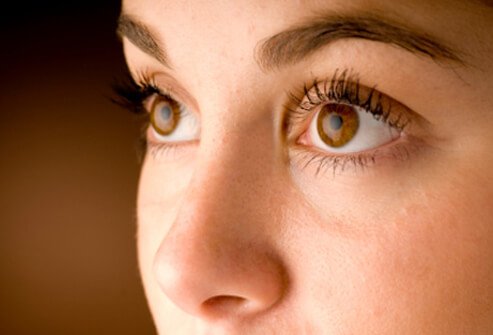
In adults, strabismus may be caused due to a medical condition like thyroid issues, myasthenia gravis, or diabetes. Head trauma, eye trauma or a stroke may also cause strabismus. Strabismus occurs when there is a faulty electrical signal from the brain to the extra-ocular muscles of the eye, causing poor two-eyed coordination. At Vision For Life, the goal of vision therapy is to align the eyes without surgery. Vision therapy is key in helping to strengthen the bond between the brain and the eyes, keeping them aligned to improve depth perception.
The best way to determine if you or a loved one has strabismus is to have an evaluation by a behavioral optometrist trained in vision therapy. At Vision For Life, we are very successful at treating strabismus and symptoms associated with the condition. Strabismus comprises approximately 80% of our patient care. Common symptoms of strabismus are:
- Poor depth perception
- Motion sickness
- Double vision
- Poor motor and sports skills
- Clumsiness, accident-prone
- Constant headaches or migraines
- Squinting his or her eyes, and tilting his or head in order to see better
- Eyestrain and fatigue
- Trouble focusing, especially when he or she is tired
- Having difficulty reading
- Differing prescription strengths for each eye
There are two common forms of strabismus in adults. One is accommodative esotropia which occurs due to uncorrected farsightedness. Individuals focusing to keep images clear due to farsightedness may cause the eyes to turn inward. If you begin to see double or close or cover one eye due to close work, it may be due to accommodative esotropia. Intermittent exotropia can develop when a person struggles with coordinating both eyes together. Headaches, eye strain and difficulty reading are symptoms that may emerge.
Once diagnosed, there are options available to ensure a successful treatment plan. Options include corrective eyewear and vision therapy which may include patching an eye. Light therapy can also be used to encourage the eyes to work effectively in unison. We personalize our vision therapy program so that it treats the individual, helping our patients see clearly again with their eyes working together. If diagnosed with strabismus, it’s best to begin therapy as soon as possible to obtain the best outcome.
Our comprehensive vision evaluation and treatments are extremely successful in diagnosing and treating vision problems and concerns. If strabismus is diagnosed, we can discuss the option of vision therapy as a corrective method. Vision therapy can be helpful for children as well as adults for correcting or improving individuals with strabismus. Whether you merely suspect the condition or have symptoms, you are encouraged to contact us as soon as possible by visiting our website at https://visionforlifeworks.com/ or by calling us at 618-288-1489.
